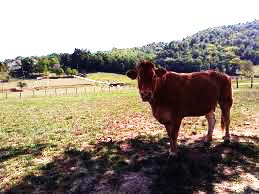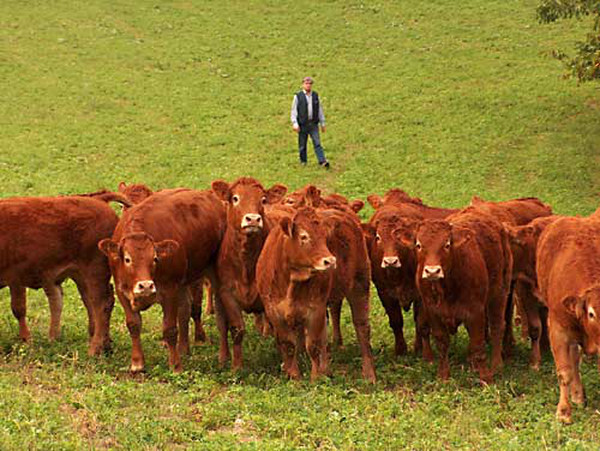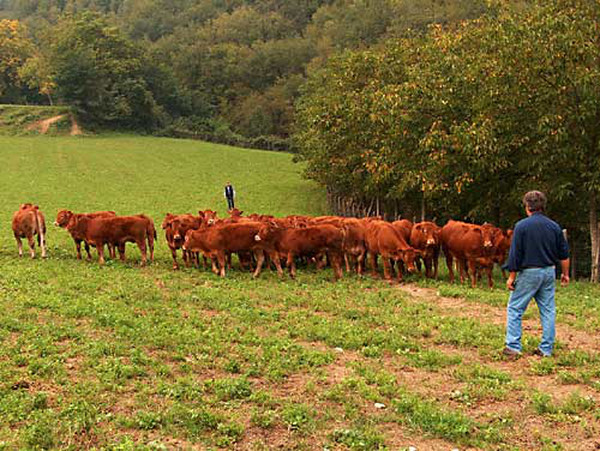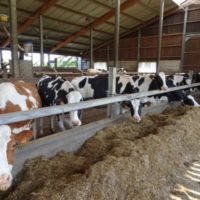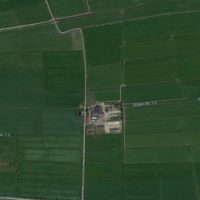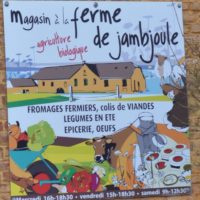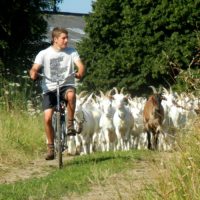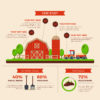Description
Background
The rangeland of Mugello is located around the province of Firenze, in Tuscany, area particularly vocated to the production of high quality beef from special breeds as Chianina, Romagnola, Limousine and Marchigiana. Meat has always had a long-standing tradition in Mugello, and for numerous years, the territory has been dedicated to promoting this wealth.
Only breeds, which are able to adapt to the environment, are bred here. There are two different types of breeding farms, the organic farm, which abides by strict regulations, and the conventional one. However, all the feed is strictly vegetable and the living conditions of the animals are excellent. Pure bred calves are regularly slaughtered before they are 24 months of age.
Breeds are managed in semi extensive systems with large use of natural pasture, only seldomly supplemented by forage and concentrate.
The extensive system is already used in some areas of Italy for rearing sheep and cattle. The returns on capital and labour can be increased by making use of land, which is otherwise unproductive, often due to the climate or the nature of the soil. The expansion of this farming system does however require new production techniques involving structural and functional change which include: use of capital, fodder and irrigation supplies, availability of and management of the land and rearing methods.
Added to this there is a shortage of suitable land where extensive forage can be produced at acceptable costs and the problems of the land tenure system. Therefore, it is clear that there are a number of difficulties to be overcome if an extensive system is used to rear cattle and sheep in an efficient and cost effective way.
Nevertheless, there have been changes in the productive system over the last few years. There is public concern about the impact of agriculture on the environment, in terms of maintaining or increasing biodiversity, on landscape value and recreational use of land, on pollution and water quality and on animal welfare. This provides a glimpse of the possibilities offered by a different approach towards the use of productive resources, which can lead to an increase in the economic efficiency linked with forms of territorial integration and social and economic development.
Detailed description
Nocentini Agricola farm has been founded in 1980. Nowadays in farm are employed 4 people full time plus the two owners. The farm is totally focused on high quality limousine beef production by the cow-calf system. The farm extension cover about 270 ha among which, 170 ha as permanent grassland and 100 ha as arable land. On average, the herd consist of 180 adult cows and 6 to 8 bulls. The farm is managed on a semi extensive system with a UAA around 1.8 head/ha.
The innovation of SS Agricola farm is related to whole production chain, and in particular based on fattening of young animals immediately after weaning, on a grazing before weaning, instead of cultivated grassland grazing with no adverse consequences for the performance of the young cattle. The extended use of grassland produces animals which are appreciated on the market, and provides other amenities in terms of animal welfare, environment, healthiness and safety of the meat.
SS Agricola has pure Italian Limousine. This breed of cow finds its origins in the Massif Central in France, and has expanded notably throughout the Mugello area where give origin to the Italian Limousine Nucleus. It has always been bred for its meat, but a careful selection process has made it a highly specific breed that provides a great deal of beef at the time of butchering and calves that can be sold any time from 3 months to 2 years of age. The gregarious nature of the animal and the robustness of its legs and thighs result in excellent Limousine herds that graze prolifically. The cows calve easily, and this can take place sometimes more than once a year. The maternal instinct of the cows, the quantity of milk produced and the fact that it is rich in fat guarantee the calves a healthy growth rate, which takes them from their rather low birth weight, less than 40 kg, to over 250 kg at the time of weaning at 6-7 months of age. Other characteristics, which are a result of the selection process, are long life span and fertility.
The Limousine cow, both older and younger animals, has a reddish-brown hide with lighter patches around the eyes and snout.
Results
The perfect match between tradition and innovation, coupled with an optimal use of the genetics and breeding made the Nocentini farm among the top ten beef farm in the region. Particular attention is paid to the correct management of the grassland to keep the entire production process above the standard in quality and maintain the timeline sustainable.
The optimal grassland and arable land management allows the farm to self-produce more than the 90% of the total feed required.
After a gestation (pregnancy) of nine months, the cow (mature female) will usually give birth to one calf that weighs around 30 to 45 kg. Critical cows are seldomly kept in calving areas during the calving period, so that farmers can keep a close watch over cows and calves during this critical period. Cows will remain active in the breeding herd for more than 8 years.
The calves are weaned at six to seven months of age, and at a weight of about 250 kg. For the next stage of the beef production cycle, the beef animal will typically be brought to a finished market weight of approximately 550 to 700 kg.
The farm produce more than 180 calves per years with an average carcass evaluation steadily above R+ and reaching very often E or S of the SEUROP classification score.
Adoption criteria
Nocentini farm is an example of perfect match of innovation and tradition. The management routine of the grassland has been set benefitting from the connection with University and researchers and is constantly updated based on the more recent research results.
The total biomass as well as the species richness and the edible value of the pasture are constantly monitored to balance the animal load per ha and assure that every cow has a sufficient availability of forage and energy.
Each calf is also weighed on regular basis to monitor the daily gain and also produce data for the genetic evaluation. The farm in fact is associated to the ANACLI breeder association in charge to manage the Italian Limousine herd-book (all the animals of ss. Agricola are subscribed in the herd-book) and participate to the Italian Limousine breeding program.
Future prospects
In the future the farm envisage to enlarge the herd of course compatibly to the land and grassland available, and adopt a genomic evaluation methods to improve the genetic make-up of the cows and bulls.
Also a specific plan to monitor the environmental impact of the production, the SAI platform approach, is under evaluation to be adopted and, possible underwent to a certification of “ environmentally free production”.

